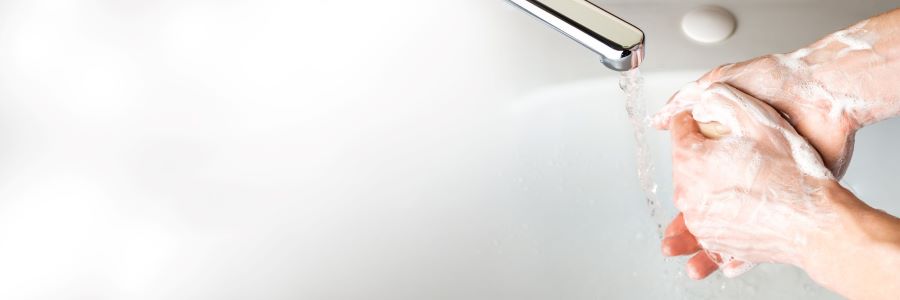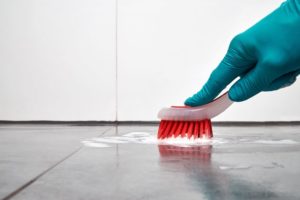/SPONSORED CONTENT/

Sometime between 2200 BC and 2800 BC, humans made soap for the first time. A simple recipe calling for oil, water and alkali was carved into a tablet. It is profound that the world is still using basically the same approach humanity discovered millennia ago; washing our hands with soap and agitation. Sure, the chemistry these days is quite a bit more nuanced, but the general process of generating a lather and high agitation are still keys to proper cleaning processes, just like they were in 2200 BC.
Biocides, however, are a much more recent discovery and are an excellent addition by Pasteur, Lister et al to our cleaning processes. Yet it is important to be clear that cleaning is an entirely separate step from biocide application. This is generally understood and followed when an associate is at the three-basin sink, but execution can be inconsistent during processes involving buckets, spray bottles, or hoses.
Remember, in sanitizer efficacy testing the presence of soils isn’t required. The 99.9% reduction on the label is reliant on the cleaning step being completed effectively, you cannot sanitize dirt. In regulatory terms, adequate cleaning is assumed. It is so important, and yet it so often gets skipped – or fundamentally abbreviated.
In order to improve food safety outcomes, we need to focus on process execution. Perhaps the pie-in-the-sky, consumer marketing of “one-size-fits-all magic cleaning chemicals” has clouded things. But the simple truth is that the world’s most effective cleaner or sanitizer will not work if it is not used properly. Conversely, milder chemicals can be made to work, if used correctly. Chemicals are not meant to replace the cleaning and sanitizing processes but to enable them.

Even though humanity has cleaned ourselves and our environment for thousands of years and have used sanitizers for hundreds of years we still have gaps in our understanding of how our sanitation processes can drive changes in the composition of the food-processing environment microbiome. For example, published data suggest the perennial problem of Listeria persistence likely begins by the chance overlap of its introduction into the environment and conditions suitable for colonization. Our industry partners in academia are already working on it. We will learn more about what governs built-environment microbiome composition, albeit slowly.
In the meantime, our best option is to continue sanitation using optimal processes including the correct levels of mechanical action, appropriate temperatures, and proper concentrations of chemicals. The upshot is that cleaning, using good processes and enabled by effective products, also breaks up biofilms and biomass, allowing sanitizers to work. After all, biofilms are just another type of soil.
If you haven’t heard someone use a phrase like “clean must be seen” in the last few months, you probably will soon. Unfortunately, SARS-CoV-2 is here to stay. Even after life returns to something more akin to 2019, the risk-averse behaviors of today won’t soon fade. Let’s take advantage of the cultural awareness and desire for cleanliness to build food safety habits that will hopefully stick around after the pandemic leaves the headlines.
At Diversey’s Special Session at the GFSI Conference on March 24 at 10:40 AM EST, we will explore different strategies for how to ensure optimal and regular execution of Sanitation Standard Operating Procedures (SSOPs). Diversey’s Chris Jordan will host a collaborative roundtable discussion with guest speakers Sara Mortimore, VP of Global Food Safety for Wal-Mart, Dr. Anglea Fraser who is a Professor at Clemson University and expert in translating science into practice, and Dr. David Buckley, Director of Technical Consulting for Diversey North America. The discussion will surround lessons learned in training, accountability, and future directions for sanitation execution. We know that good SSOPs, followed correctly and supported by effective chemicals, work well.
Let’s get back to basics. Let’s clean as if we’ve been doing it for four-thousand years, apply biocides effectively, and focus on fostering habits that reinforce process execution. If we do these things, we will have gone a long way towards achieving desirable food safety outcomes.

Jack Burnett
Technical Consulting Manager | Retail & Food Service
Diversey